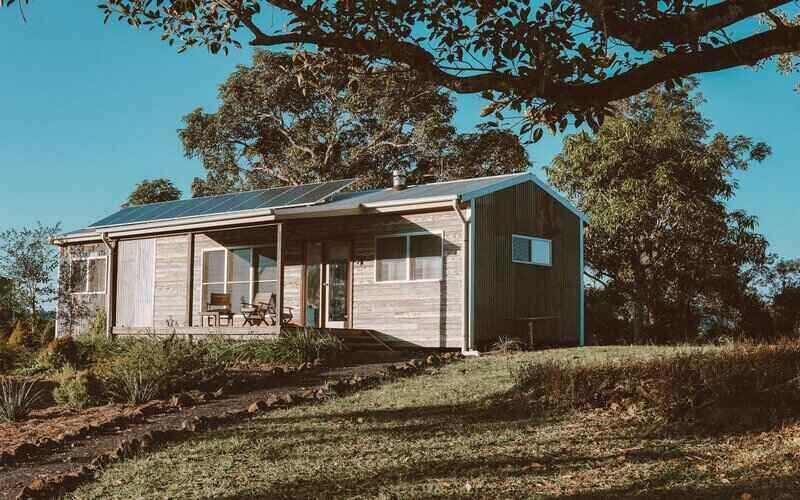The biggest decline was the Richmond-Tweed area of New South Wales, where house prices are 20.4% lower than in July '22.
The Southern Highlands in NSW (down 15%), along with Ballarat (down 11.2%) and Geelong (down 10.4%), were the other areas to record a double digit decline in house values.
Most of this drop is likely attributable to the second half of 2022, where property prices across Australia declined as interest rates kept rising.
Things have seemingly turned a corner since, with July marking the fifth successive month CoreLogic's Home Value Index reported positive growth for the Australian property market.
Despite this, regional property was still 5.6% cheaper than the same time last year, with a 21.3% decline in the number of sales.
Against the grain was Queensland, where property is proving more resilient, boasting four of the seven regions recording positive growth.
Central Queensland (+2.7%), Mackay-Isaac-Whitsunday (+1.2%), Toowoomba (+0.7%) and Cairns (+0.5%) all bucked the downward trend most of the country has seen in the past 12 months.
CoreLogic Australia Head of Research Eliza Owen said while generally speaking, the Australian property market is on the road to recovery, this is being driven mostly by capital cities, with softer demand for regional property.
"Year-on-year growth was hard to find across regional Australia in the past 12 months. The markets that saw an increase were largely more affordable and were more rural," Ms Owen said.
"Presumably, lower value assets have been more resilient to increases in interest costs because they require lower indebtedness."
The most recent Home Value Index found capital city property prices rose 0.8% in July, compared to 0.2% for regional areas.
Sale volumes still low
The property markets recovery in the past few months has coincided with continually low levels of listings, leading many experts including Ray White chief economist Nerida Conisbee to conclude a causal relationship.
"We're finding that there is a definite shortage of properties for sale, and it doesn't look like it's going to get better anytime soon," Ms Conisbee told the Savings Tip Jar podcast.
"Sellers are a little bit nervous about the market...even though we have had all these interest rate rises, this shortage of properties on market is creating faster price growth than anyone expected."
This was evidently the case throughout regional Australia, with not a single area recording an increase in sales volumes in the past twelve months.
The smallest change was Townsville (QLD), where the number of property transactions dropped 11.3%, while in Southern Headlands and Shoalhaven, sales volumes were 33.6% lower over the twelve months to July '23.
Targeted migration boosting rural Australia?
One of the factors boosting demand for Australian property is a surge in migration, with the government forecasting net overseas migration to be around 315,000 in 2023/24.
This is boosting capital city prices in particular, with many migrants gravitating towards the likes of Sydney and Melbourne, particularly working holiday makers and students.
Ms Owen however pointed out permanent migrants could also be boosting demand at the other end of the property market, in Australia's more remote, rural areas.
"Targeted migration programs tend to focus on parts of regional Australia as a pathway to permanent residence, so some of the more rural, regional parts of the country may have seen sustained housing demand as international travel restrictions have lifted throughout 2022," she said.
The Australian government has a permanent migration program with 137,100 spots available for 2023/24 to improve the productive capacity of the Australian economy and fill skill shortages in the labour market, including those in regional areas.
This means many migrants end up resettled outside of the major cities, which could explain why more affordable property markets have seen stronger growth in recent months.
Take Victoria for example: temporary migrants like students or those on holiday visas are likely to gravitate towards Melbourne, while permanent migrants could be directed towards more rural areas like Towong (where house prices rose 1.2% through the year, the only area of Victoria to do so).
This would mean fewer immigrants in satellite cities like Geelong or Ballarat, which could be a factor behind softer property prices.
Advertisement
Buying a home or looking to refinance? The table below features home loans with some of the lowest interest rates on the market for owner occupiers.
| Lender | Home Loan | Interest Rate | Comparison Rate* | Monthly Repayment | Repayment type | Rate Type | Offset | Redraw | Ongoing Fees | Upfront Fees | Max LVR | Lump Sum Repayment | Extra Repayments | Split Loan Option | Tags | Features | Link | Compare | Promoted Product | Disclosure |
|---|---|---|---|---|---|---|---|---|---|---|---|---|---|---|---|---|---|---|---|---|
5.54% p.a. | 5.58% p.a. | $2,852 | Principal & Interest | Variable | $0 | $530 | 90% |
| Promoted | Disclosure | ||||||||||
5.49% p.a. | 5.40% p.a. | $2,836 | Principal & Interest | Variable | $0 | $0 | 80% |
| Promoted | Disclosure | ||||||||||
5.64% p.a. | 5.89% p.a. | $2,883 | Principal & Interest | Variable | $250 | $250 | 60% |
| Promoted | Disclosure | ||||||||||
5.64% p.a. | 5.89% p.a. | $2,883 | Principal & Interest | Variable | $248 | $350 | 60% |
| Disclosure |
Picture by Elle Hughes on Pexels

Ready, Set, Buy!
Learn everything you need to know about buying property – from choosing the right property and home loan, to the purchasing process, tips to save money and more!
With bonus Q&A sheet and Crossword!





